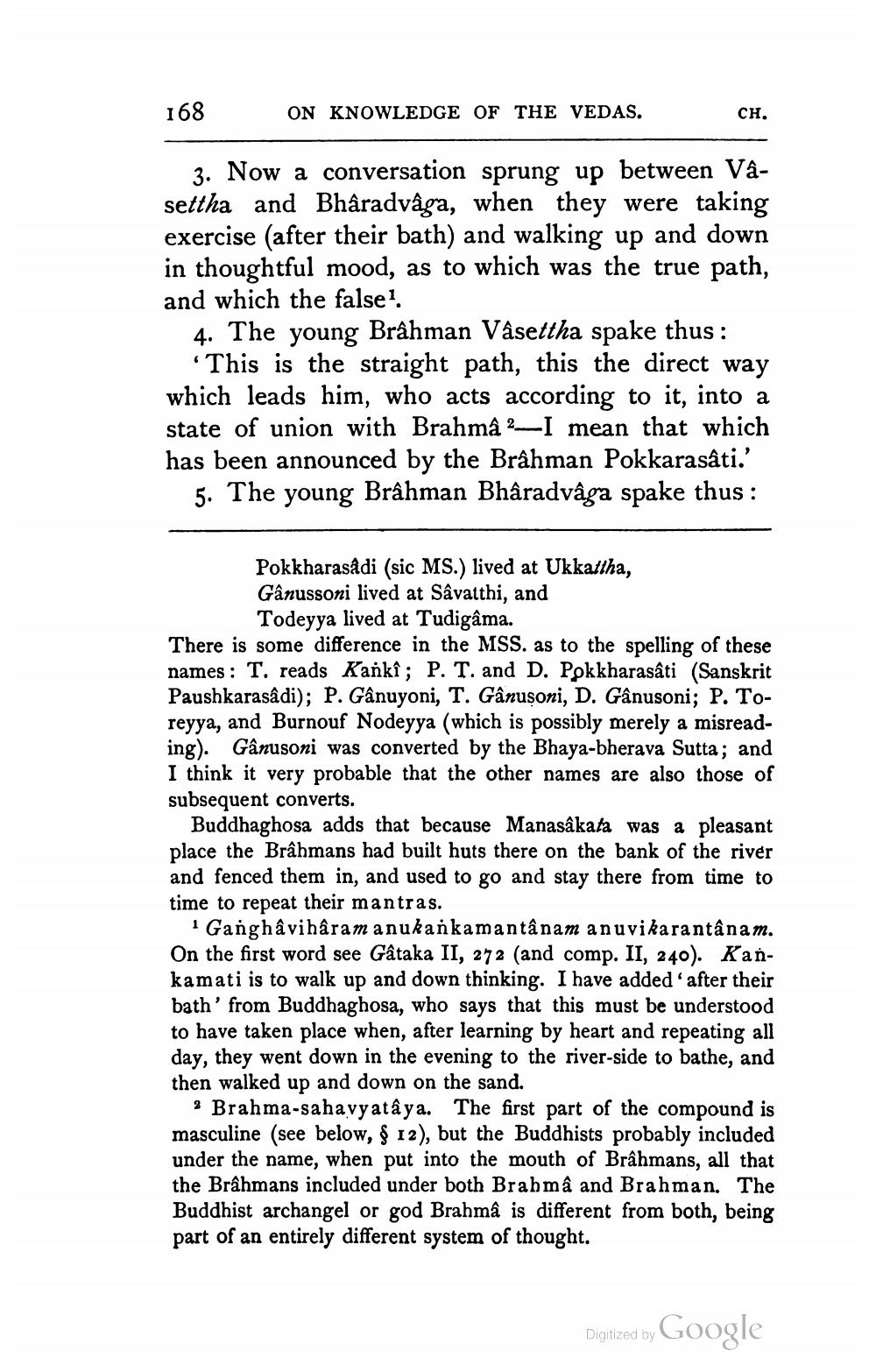________________
168
ON KNOWLEDGE OF THE VEDAS.
CH.
3. Now a conversation sprung up between Vâsettha and Bhâradvậga, when they were taking exercise (after their bath) and walking up and down in thoughtful mood, as to which was the true path, and which the false. 4. The young Brâhman Vasettha spake thus:
This is the straight path, this the direct way which leads him, who acts according to it, into a state of union with Brahmâ 2-I mean that which has been announced by the Brâhman Pokkarasâti.'
5. The young Brâhman Bhâradvậga spake thus :
Pokkharasâdi (sic MS.) lived at Ukkattha, Gânussoni lived at Sâvatthi, and
Todeyya lived at Tudigâma. There is some difference in the MSS. as to the spelling of these names : T. reads Kankî; P. T. and D. Pokkharasati (Sanskrit Paushkarasâdi); P. Gânuyoni, T. Gânusoni, D. Gânusoni; P. TOreyya, and Burnouf Nodeyya (which is possibly merely a misreading). Gânusoni was converted by the Bhaya-bherava Sutta; and I think it very probable that the other names are also those of subsequent converts.
Buddhaghosa adds that because Manasâkata was a pleasant place the Brâhmans had built huts there on the bank of the river and fenced them in, and used to go and stay there from time to time to repeat their mantras.
Gangh âvihâram anukankamantânam anuvikarantânam. On the first word see Gâtaka II, 272 (and comp. II, 240). Kankamati is to walk up and down thinking. I have added after their bath' from Buddhaghosa, who says that this must be understood to have taken place when, after learning by heart and repeating all day, they went down in the evening to the river-side to bathe, and then walked up and down on the sand.
3 Brahma-sahavyatâya. The first part of the compound is masculine (see below, § 12), but the Buddhists probably included under the name, when put into the mouth of Brâhmans, all that the Brâhmans included under both Brahma and Brahman. The Buddhist archangel or god Brahma is different from both, being part of an entirely different system of thought.
Digitized by Google




